- Travel on Sado Island Model Course Guide
- A Journey through Terraced Rice Paddies
A Journey through Terraced Rice Paddies
-
Departure

The Okawa village on the east coast of Sado thrived as a port of merchant shipping during the Edo Period (1603-1867), with shipping agents standing side by side. Tsugami Shrine, a mainstay of this village, houses two well-worshipped deities, a god of safety for vessels on the kitamaebune western shipping route, and a god of good commerce. Tsugami Shrine used to be situated behind the village, and was reputedly relocated to where it now stands sometime before the Genroku era (1688 - 1704). Farther beyond the red Tsugami bridge, the main hall lies and enshrines the sea gods of Sumiyoshi.
-
Approximately 5 minutes by car5 minutes by busDestination B
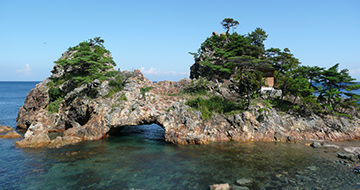
Akagameiwa is a big, red stone of iron quartz, which can be seen from a bathing beach in Akagame Kazashima Nagisa Park. The rock has a hollow in the middle, and the shape resembles to parent and child nestling up together. "Once upon a time, when a fisherman in Suizu encountered a turbulent sea, a big turtle appeared, and the fisherman and his boat rode on the turtle's back and returned to the port. The turtle turned into a rock, and villagers named the rock "Akagame". The rock has this folk story, and there is a shrine to enshrine Akagame Myojin god.
-
Approximately 5 minutes by car5 minutes by busDestination C
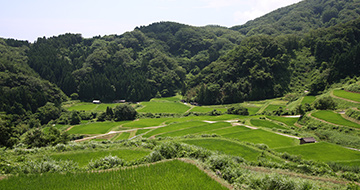
In a mountainous area facing the sea, rice terraces in various sizes stretch out for 200,000 square meters. The large temperature gap between day and night at this height, the clear water streaming from the mountains, and the love of people in Katanoo make for delicious rice. Among other things, Katanoo boasts of its rich nature, once inhabited by the last wild Toki (crested ibis). People in Katanoo are continuously working on creating a biotope, and growing organic and reduced-agrochemical rice.
-
Approximately 5 minutes by car5 minutes by busDestination D
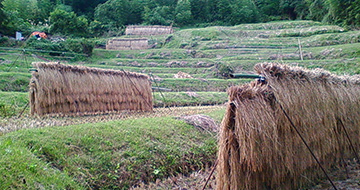
The Tsukibuse area is abundant in water, with seven rivers running through it and natural springs bubbling up. There are many small rice fields, so-called hidden paddies, which have escaped zoning, so the natural landform remains intact while the abundant water supplies every single rice terrace. These rice paddies are cared for by locals, together with voluntary support from outside the island. Dedicated farmers are working hard to create a biotope and maintain the ecosystem, too.
-
Approximately 15 minutes by carApproximately 15 minutes by busDestination E
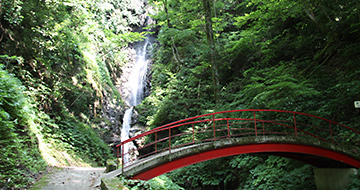
The waterfall is located about 1km upstream on a mountain road along the Iwakubi River from the Sado's Ring Road. A five-minute walk from a red torii gate will lead you to the waterfall at 29m. According to legend, Fudo Myoo resides in the waterfall. A sip from the waterfall is said to bring babies to new parents. The vermillion-painted arched bridge "Takimibashi (waterfall viewing bridge)" in front of the waterfall beautifully contrasts with foliage of trees.
-
Approximately 5 minutes by car5 minutes by busDestination F
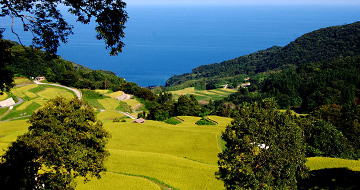
The terraced rice field stretches in the mountains over 350m high in the Iwakubi area. The rice paddies have been passed down since around the Edo Period, and about 460 paddies remain until today. Making full use of the land with a steep slope, local people cultivate the rice fields in various size and shapes, which stretch to the top of the mountain like a dragon rising high into the sky. The scenery is particularly spectacular when the morning sun shines on the rice fields filled with water in early spring. The view from the viewing hut is also stunning.
-
Approximately 15 minutes by carApproximately 15 minutes by busGoal!
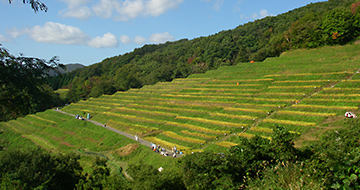
Small rice fields are located side-by-side on a slope of a mountain close to Ogura Dam, along Prefectural Route 181 stretching through Hatano to Oda. Ogura Senmaida is Sado's representative terraced rice fields, and these fields are said to be cultivated to feed an increasing population as a result of the thriving gold mine in the Edo Period (1603-1867). Although the terraced rice fields were once on the verge of being set aside or abandoned, local people now work to manage and maintain the fields by introducing field ownership system from around 2000.